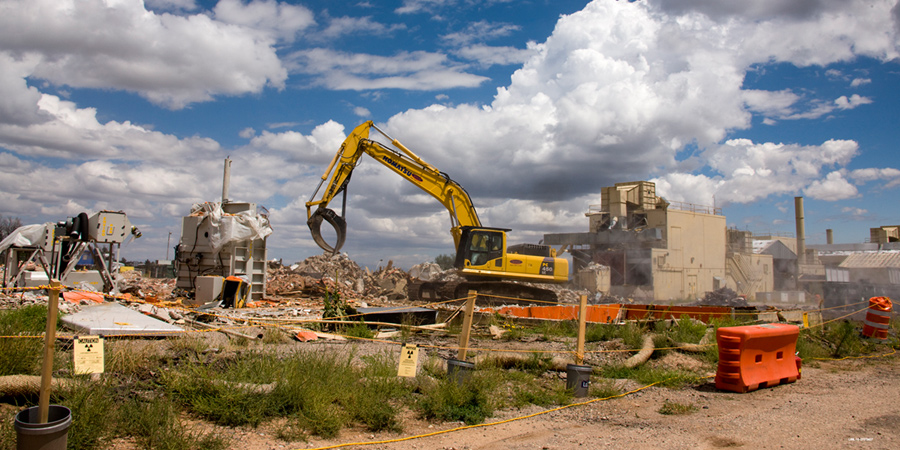Table of Contents
- Understanding the Need for Commercial Demolition
- Key Steps in Planning a Commercial Demolition
- Choosing the Right Demolition Method
- Ensuring Safety and Compliance
- Managing Waste and Debris
- Working with Professional Demolition Contractors
- Cost Considerations
Understanding the Need for Commercial Demolition
Commercial demolition often becomes necessary for a variety of reasons. Whether it’s to make way for new developments, remove unsafe structures, or modernize aging buildings, the process of commercial demolition can be complex and daunting. Proper planning and execution are critical to ensuring a successful outcome. For instance, an outdated commercial property may no longer serve its intended purpose effectively, thus making building demolition imperative. Similarly, structures rendered unsafe by time, natural disasters, or degradation need to be demolished to prevent hazards.
Key Steps in Planning a Commercial Demolition
Planning a commercial demolition involves several critical steps. Each step is vital for ensuring that the project runs smoothly and safely. Here’s a detailed breakdown:
Site Assessment
A comprehensive site assessment is the first step. This entails assessing both the surrounding area and the building that is to be dismantled. Understanding the site’s condition helps in choosing the appropriate demolition method and identifying potential hazards. An in-depth assessment will typically look into the building’s structural integrity, proximity to other buildings, and any environmental issues that need to be addressed.
Permit Acquisition
Acquiring the necessary permits is a must before any demolition can commence. Regulatory requirements vary by location, so it’s important to consult local authorities to ensure compliance. This can include zoning permits, environmental permits, and special permissions if the building contains hazardous materials such as asbestos. Obtaining these permits can be a time-consuming process, but it’s essential for legal compliance and to avoid project delays.
Method Selection
The choice of demolition method depends on various factors, such as the structure’s size, location, and construction material. Common methods include implosion, high-reach arm demolition, and traditional wrecking balls. Each method has its pros and cons that need to be evaluated. For example, implosion might be suitable for urban settings where space is limited, while high-reach excavators might be more appropriate for taller structures.
Safety Planning
Safety planning involves creating a comprehensive strategy to protect workers and the public. Respecting local laws and OSHA requirements is essential to keeping workers safe on the working site. A detailed safety plan will typically include emergency procedures, personal protective equipment (PPE) requirements, and protocols for handling hazardous materials. Regular safety briefings and training sessions can further enhance onsite safety.
Choosing the Right Demolition Method
The chosen demolition method can significantly impact the project’s cost, timeline, and safety. There are several common techniques:
- Traditional Wrecking Ball: This method is often used for buildings of medium height and involves a heavy ball swung by a crane to break down the structure. It’s an older method that is still effective but requires a lot of space and can be less precise.
- High-Reach Arm: Ideal for tall buildings, this method employs a long arm fitted with specialized tools to dismantle structures piece by piece. This method offers greater precision and control, making it suitable for urban environments where surrounding structures must be protected.
- Implosion: Explosives are strategically placed within a building to cause it to collapse inward, efficiently demolishing large structures in a controlled manner. Although this approach is quick and efficient, it needs to be carefully planned and carried out to guarantee security and reduce unintentional harm.
Ensuring Safety and Compliance
Ensuring safety is paramount in commercial demolition projects. Compliance with local regulations and OSHA standards is essential to prevent accidents and avoid legal issues. The resource from OSHA provides detailed guidelines that can help in planning and executing a safe demolition project. These guidelines cover everything from initial site assessments to final clean-up, ensuring that all potential hazards are addressed and mitigated.
Ensuring compliance often involves multiple stakeholders, including safety inspectors, project managers, and local authorities. Frequent safety audits and ongoing monitoring can assist in seeing such problems early on and taking appropriate action to resolve them before they worsen.
Managing Waste and Debris
Efficiently managing waste and debris not only aids in environmental sustainability but also ensures compliance with regulations. Developing a waste management plan can be beneficial in recycling materials and proper disposal. The EPA’s guidelines on sustainable materials management offer useful insights for this purpose. This plan typically involves segregating waste into recyclables, hazardous materials, and general debris, ensuring each type is handled appropriately.
The requirement for new raw materials is decreased by the fact that commodities like steel and concrete can frequently be recycled and used again. Hazardous materials like asbestos and lead-based paint need specialized handling and disposal to avoid environmental contamination. The significance of sustainability is further highlighted by the fact that effective waste management can help new construction projects obtain LEED (Leadership in Energy and Environmental Design) certification.
Working with Professional Demolition Contractors
Employing experienced and skilled demolition contractors can significantly influence the project’s success. Choosing a contractor with a solid track record and appropriate certifications ensures the project is handled professionally and within the set timelines and budget. A reputable contractor’s portfolio of completed projects and client endorsements can be quite helpful in helping you make an informed choice.
It is imperative to guarantee that the contractor have the requisite insurance coverage in order to safeguard against any possible liabilities. A well-written contract that specifies the parameters of the job, the timetable, and the terms of payment might assist to prevent misunderstandings and disagreements later on.
Conclusion
Proper planning and execution are vital for a successful commercial demolition project. From understanding the need for demolition to ensuring safety and compliance, each step plays a critical role. Effective waste management, selecting the right methods, and working with professional contractors are key elements that contribute to the project’s overall success. By following these guidelines, you can ensure that your commercial demolition project is completed efficiently, safely, and within budget.










